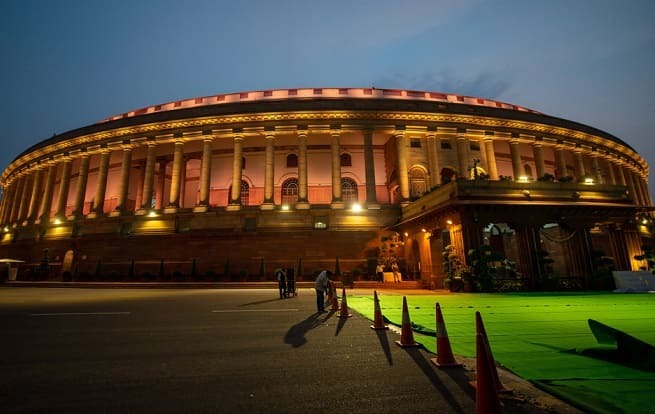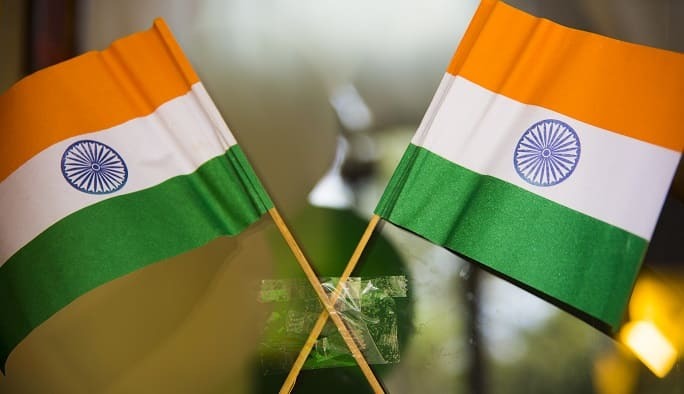
 Data Structure
Data Structure Networking
Networking RDBMS
RDBMS Operating System
Operating System Java
Java MS Excel
MS Excel iOS
iOS HTML
HTML CSS
CSS Android
Android Python
Python C Programming
C Programming C++
C++ C#
C# MongoDB
MongoDB MySQL
MySQL Javascript
Javascript PHP
PHP
- Selected Reading
- UPSC IAS Exams Notes
- Developer's Best Practices
- Questions and Answers
- Effective Resume Writing
- HR Interview Questions
- Computer Glossary
- Who is Who
What is the full form of GOI?
Introduction
Government of India (GOI), the nation's governing body, has jurisdiction over the administration of the nation. In this federal parliamentary democratic republic, the Prime Minister of India serves as the head of government and the President of India is the ceremonial head of state. The federal government and state governments share political power in the multi-party democracy that governs the country.

The three branches of the national government are the legislative, executive, and judicial ones. India's Parliament, which is the primary legislative body in the nation, is made up of the Lok Sabha (House of the People) and the Rajya Sabha (Council of States). The executive branch, which is in charge of putting laws and policies into effect, is made up of the Prime Minister, Cabinet Ministers, and civil servants. The judiciary, which is in charge of interpreting the laws, is made up of the Supreme Court, High Courts, and lesser courts.
Structure of Government of India
India's government is a multi-party political republic with a federal parliamentary structure. The Prime Minister is India's head of government, whereas the President is the head of state. The three branches of government are the legislative, executive, and judiciary.
Legislature The Indian Parliament, which consists of two houses and is the country's highest legislative body, is bicameral.
Rajya Sabha (Council of States) The 245 members of the upper house are chosen by the representatives of the state legislatures and the union territories.
Lok Sabha (House of the People) It is the lower house and has 545 members who are chosen by India's citizens themselves.
Executive India's head of state, the President, is chosen by an electoral college made up of representatives from both houses of Parliament as well as state legislative bodies. The President appoints the Prime Minister, who serves as the head of state. The Cabinet Ministers make up the executive arm of the government and are in charge of running a number of ministries and departments.
Judiciary India's independent judiciary is divided into three levels:
Supreme Court of India It is situated in New Delhi and is the nation's highest court. The Supreme Court is presided over by the Chief Justice of India.
High Courts Each state has a high court that acts as the Supreme Court in that state.
Subordinate Courts These are the district-level lower courts that have been formed to deal with both civil and criminal matters.
Powers and Responsibilities of Government of India
The Indian Constitution specifies a number of responsibilities and powers for the Indian government.

Some of the key powers and responsibilities of the Government of India are as follows
Legislative Powers On a number of areas that come within its purview, the Government of India has the authority to create laws and legislation. This authority rests with the Rajya Sabha and Lok Sabha, the two houses of the Indian Parliament.
Executive Powers The Indian government has the authority to carry out laws and regulations that have been approved by the parliament. The Indian President, the Prime Minister, and the Council of Ministers are granted executive authority.
Judicial Powers Judges for the Supreme Court and the High Courts may be chosen by the Indian Government. The court, which is independent, has the authority to interpret the laws that the administrative and legislative branches have approved.
Foreign Relations The Indian government has the authority to manage its ties with other nations. India's foreign policy is managed by the Ministry of External Affairs, along with its diplomatic contacts with other nations.
Defence The responsibility of guaranteeing the nation's defence and security falls on the Indian government. This entails maintaining a potent military and making certain that the nation's borders are secured.
Finance The management of the nation's finances is within the purview of the Indian government. The yearly budget preparation and presentation to the Parliament are part of this, as is making sure the country's fiscal policies are in accordance with its economic objectives.
Social Welfare Promoting social welfare and development is the responsibility of the Indian government. This involves putting into practice laws that support social welfare, healthcare, and educational initiatives for the benefit of the populace.
Overall, the government is in charge of making sure that the nation's affairs are run successfully and efficiently for the benefit of its people.
Key Ministries and Departments under Government of India
Multiple important ministries and departments are part of the intricate organisational structure of the Indian government. Some of the important ministries and departments under the Government of India are
Ministry of Home Affairs Accountable for upholding India's internal security, peace and order, and territorial administration.
Ministry of Finance Accountable for developing and putting into effect financial policies, managing public resources, and regulating public spending.
Ministry of Defense It is charged with managing the Indian Armed Forces and overseeing national defence.
Ministry of External Affairs It is in charge of handling India's diplomatic ties with other nations and executing India's foreign affairs.
Ministry of Agriculture and Farmers Welfare It is tasked with developing and carrying out policies pertaining to horticulture, agriculture, and animal husbandry.
Ministry of Human Resource Development Accountable for the advancement of technology, research, and education in India.
Ministry of Health and Family Welfare Accountable for family welfare, medical education and research, and public health initiatives.
Ministry of Commerce and Industry Establishing policies to promote economic development and boosting trade, commerce, and investment in India.
Ministry of Law and Justice Responsible for developing and putting into effect policies pertaining to the legal system, the judiciary, and the administration of justice.
Ministry of Environment, Forest and Climate Change Liable for forest management, climate change mitigation, and environmental preservation.
Conclusion
In conclusion, the stability and advancement of India are significantly influenced by the Indian government. The government continues to strive to improve the quality of life for its people and to advance India's growth and development on the international arena, despite the many obstacles it encounters, including corruption, bureaucratic inefficiency, and political instability.
FAQs
What are the challenges faced by the Government of India?
Ans: Corruption, ineffective bureaucracy, political unpredictability, economic disparity, regional conflicts, and environmental degradation are just a few of the difficulties the Indian government must deal with.
How does the Government of India promote economic growth?
Ans: The Indian government fosters economic growth through encouraging investment, entrepreneurship, infrastructure development, and assistance for small and medium-sized businesses. To promote growth and development, the government also places a strong emphasis on industries including agriculture, manufacturing, and services.
What is the role of the Ministry of Home Affairs in the Government of India?
Ans: In India, preserving internal security, law and order, and territory administration are within the purview of the Ministry of Home Affairs. The National Security Council, disaster management, and the police and paramilitary forces are all under its control.

